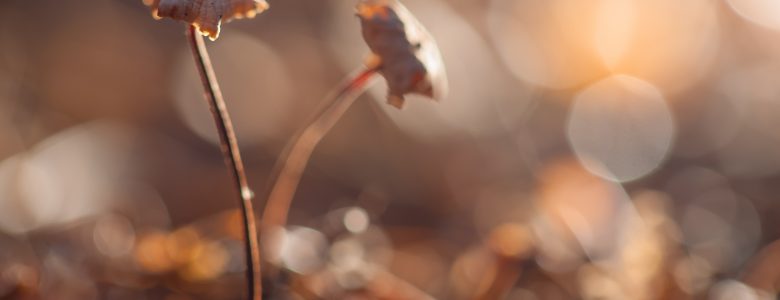December 22, 2020
The Underground Entheogenic Plants and Fungi Movement

By: burgundy bug
Mushrooms containing psilocybin grow in the forest.
Source: Adobe Stock
Amidst the buzz and bumble between your college campuses and local town halls, the murmur of four seemingly-alien words grows louder and louder.
“Entheogenic plants and fungi. Entheogenic plants and fungi. Entheogenic plants and fungi.” The phrase has a magical, mystical intrigue — and rightfully so.
Entheogenic plants and fungi refer to naturally-occurring psychedelic plants, such as psilocybin mushrooms, ayahuasca, and the peyote, iboga, and San Pedro cactus.
These species have been almost-globally outlawed since the United Nation’s Convention on Psychotropics in 1971. Until recently, the only countries where psychedelics remained legal or decriminalized were countries where they held historic and cultural importance — like in South and Central America.
Even so, the legality of psilocybin teeters along a tightrope suspended above a continent of gray areas near the equator. For example, psilocybin is illegal in Brazil, but the psilocybe mushrooms themselves aren’t.
But things are starting to change for the realm of entheogenic plants and fungi here in the US.
Why Are Some US Cities Decriminalizing Psychedelics?
When you dive into the topic a bit deeper, there are three main reasons why the US is softening its policies on these naturally-occurring psychedelics:
- The potential medicinal benefits: Over the last two decades, the “psychedelic renaissance” in the scientific realm has demonstrated the safety and efficacy of treating depression, anxiety, substance use disorder, end of life distress, and PTSD with psychedelics in controlled settings. The FDA has even approved COMPASS’ psilocybin therapy as a breakthrough therapy for treatment-resistant depression.
- Expanding research opportunities: Branching off of the last point, looser legislation leads to looser restrictions on these laboratories, and thus an increase in psychedelic research opportunities.
- Retreating from the multi-decade long war on drugs: The war on drugs has devastated lives and has cost the country roughly $1 trillion since 1971. Someone is arrested for drug possession every 25 seconds in America. These arrests disproportionately affect people of color despite their substance usage rates paralleling those who are Caucasian.
Read: Medical Magic Mushrooms: Where Do We Stand in 2020?
The Burgundy Zine
How Are These Cities Decriminalizing Psychedelics?
The legislative changes surrounding entheogenic plants and fungi aren’t an accident.
After all, it’s not like city council members and voters across the country all woke up one day with the epiphany that psychedelics shouldn’t be completely outlawed.

Rather, many of these changes are taking place as part of larger movements powered by grassroots organizations.
For example, the Society for Psychedelic Outreach, Reform, and Education played a major role in the decriminalization of magic mushrooms in Denver last year. Shortly thereafter, SPORE applied for 501(c)(3) status to become a nationwide non-profit organization, NBC News reported.
There’s also Decriminalize Nature, which stood behind the push for decriminalized psychedelics in Washington D.C., and The Oregon Psilocybin Society, which stood behind the approval of psilocybin therapy in Oregon.
These organizations are just a few among many with local chapters spreading awareness, information, and resources as they petition for entheogenic plant and fungi reform.
In turn, this creates a domino effect. As more resources and research on psychedelic therapies make headlines, awareness increases and barriers are broken down among the general public. Your average Joe, the everyday voter, learns more about these plants, and it may lead to a change of heart before they reach the polls.
Where Are Psychedelics Decriminalized in the United States?
- Denver, Colo.
- Oakland, Calif.
- Santa Cruz, Calif.
- Ann Arbor, Mich.
- Oregon — Ballot Measure 109 seeks to implement a psilocybin therapy program, while Ballot Measure 110 decriminalized all drugs in Oregon.
In Conclusion
Entheogenic plants and fungi encompass an array of hallucinogenic plants that have remained outlawed and taboo almost-globally for nearly four decades.
With the revival of psychedelic research and the uprising of these quiet movements, cities throughout the US are changing their legislation around psychedelics like shrooms.
While these policy changes may seem minuscule in light of how large the country is, we mustn’t forget just how quickly other states followed suit in changing their legislative tongue around cannabis after it was legalized in Colorado just six years ago.
Now, that doesn’t mean the psychedelic movement will traverse the same trajectory as the medical and adult-use marijuana movement.
But as research and education on psychedelics become more widespread, it’s very plausible that other cities and states will decriminalize entheogenic plants and fungi, too.
Interested in having content featured in an upcoming blog post or issue of The Burgundy Zine? Head on over to the submissions page!
For all other inquiries, please fulfill a contact form.


